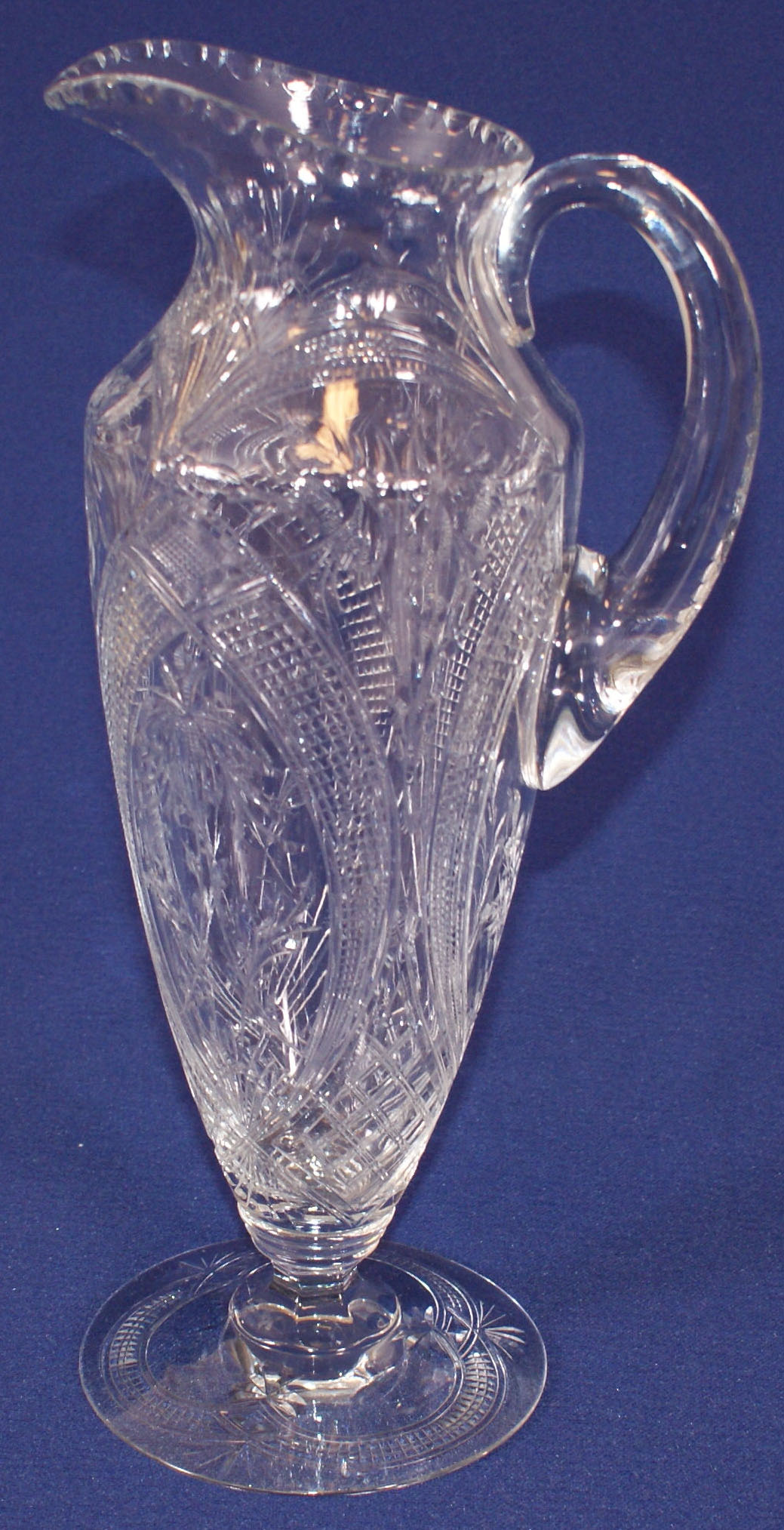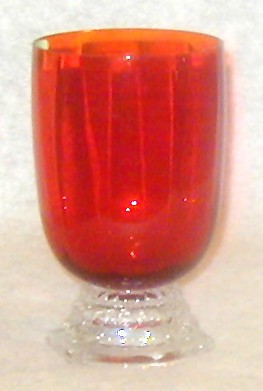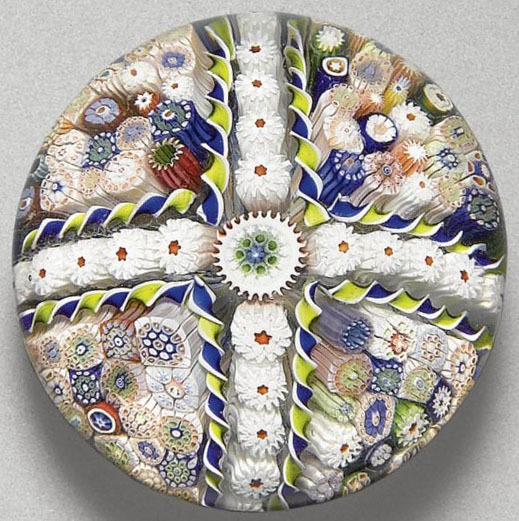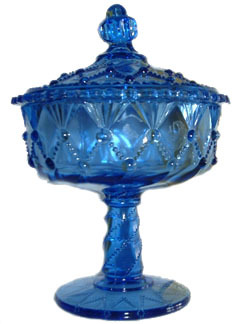The Heisey Collectors of America’s convention is held every year in June at the Heisey Glass Museum in Newark, Ohio. So is the nearby Apple Tree Auction Center’s annual Heisey specialty auction. Coincidence? Not likely. David Schnaidt, vice president and auctioneer at Apple Tree, knows the Heisey convention brings in the serious collectors and dealers, this year spanning the country from the state of Washington to Florida. The Center’s Heisey sale is geared towards this group, not only to appeal to consignors, but to give serious Heisey enthusiasts what they want; top-rate Heisey glass.
This 40th annual edition was especially impressive as many items featured were those descended down through the heirs of the late Louise Adkins, known at the “first lady of Heisey.” Adkins gave more than 50 years of service to Heisey, and she also acquired. Many of the pieces offered by Apple Tree were found boxed in the basement of Adkin’s daughter.
Of most interest were the pieces cut by Emil Krall, a native of Austria who brought his talent to Heisey in 1933. Many Heisey collectors feel owning a true Emil Krall cut piece of Heisey is the ultimate addition to any collection. Two said examples offered at Apple Tree included a Heisey 3350 Wabash tankard pitcher dressed in elaborate Krall cutting. A 4036 Marshall FTD decanter decorated in elegant Krall cutting also did well.
Heisey collectors also desire color, and several pieces like this sold. The most coveted colors are Cobalt, Tangerine and Alexandrite, according to Schnaidt. Sold were a 4027 Christos cobalt decanter and a 1430 Aristocrat cobalt tall covered candy dish. Schnaidt pointed out this piece was desired for both its color and form. Four (3397) Gascony Tangerine 2oz bar glasses and nine Alexandrite bobeches in (341) Old Williamsburg also sold at this auction.
A nice crowd of Heisey convention-attendees plus others were on hand, though active internet bidding also took place.
-Susan Mellish, p4A.com contributing editor
More about Heisey Glass:
The A. H. Heisey Glass Co. was founded in Newark, Ohio following the Civil War and remained in operation until 1956. The company was known for its finely cut and etched glassware and for a number of popular and widely marketed lines of pattern glass in the 1920′s to 1950′s as well as a line of glass animal figures.
Click here to browse all Heisey glass in the Prices4Antiques database.
Reference & Further Recommended Reading:
To search the Prices4Antiques antiques reference database for valuation information on hundreds of thousands of antiques and fine art visit our homepage www.prices4antiques.com







